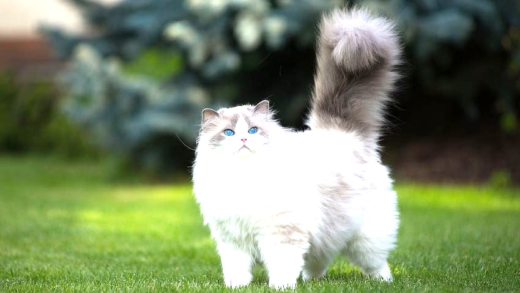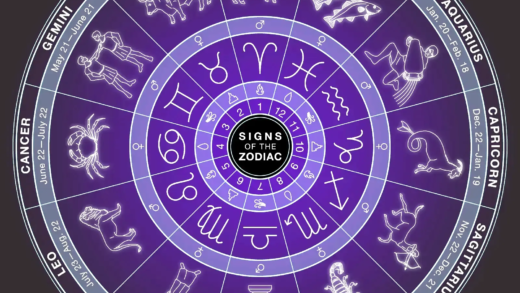Calico cats are predominantly female due to their unique genetic makeup involving X chromosomes. Their striking coat color patterns, which blend white, black, and orange, are a result of this genetic inheritance. Male calico cats are rare, occurring in only 1 in 3,000 cases due to the need for an extra X chromosome. Calico cats are also noted for their playful and affectionate personalities, making them beloved pets. Their colorful appearance and genetic quirks make them a fascinating subject for cat lovers and geneticists alike.
What Are Calico Cats?
Calico cats are a fascinating and colorful breed, recognized for their unique coat patterns. Their fur typically showcases a blend of white, black, and orange (or cream) patches, making them visually stunning. The charm of calico cats lies not just in their appearance, but also in their playful and affectionate personalities. These cats are often described as having a “patchwork” look, which is a result of their genetic makeup.
Why Are Calico Cats Mostly Female?
One of the most intriguing aspects of calico cats is their gender distribution. Approximately 99% of calico cats are female. This phenomenon is primarily due to the genetics of coat color inheritance. The calico pattern is linked to the X chromosome. Female cats have two X chromosomes (XX), allowing them to express both black and orange fur colors. In contrast, male cats typically have one X and one Y chromosome (XY), limiting their ability to display the calico pattern. This genetic basis makes male calico cats exceedingly rare, occurring in about 1 in 3,000 calico cats.
The Genetics of Calico Cats
The genetics behind calico cats is a complex yet fascinating topic. The calico coat color pattern arises from the interaction of two primary genes: the O gene, which determines orange fur, and the B gene, which dictates black fur. When a female cat inherits one of each gene on her two X chromosomes, she becomes a calico. If a male cat inherits the O gene, he will typically display the orange fur, as he has only one X chromosome. This genetic mechanism explains the vibrant and diverse color patterns found in calico cats, showcasing the intricate workings of feline genetics.
Male Calico Cats: Are They Really That Rare?
Male calico cats are a rare phenomenon in the feline world. While approximately 99% of calico cats are female, male calico cats occur in about 1 in 3,000 cases. This rarity stems from their genetic makeup. Male cats typically have one X and one Y chromosome. For a male cat to display the calico pattern, he must inherit an extra X chromosome, resulting in a genetic condition known as Klinefelter syndrome (XXY). This unique genetic combination allows them to show the characteristic calico colors, but it also often comes with health complications.
Interestingly, male calico cats are often sterile, which contributes to their low numbers. They may have striking appearances, but their biological limitations mean they can’t contribute to the calico population. Owners of male calico cats should be aware of the potential health issues, which can include hormonal imbalances and developmental challenges. Despite their rarity, these cats can be as charming and affectionate as their female counterparts, making them a sought-after pet.
Unique Features of Calico Cats
Calico cats are not just beautiful; they possess several unique features that set them apart from other breeds. The most striking feature is their coat pattern, which combines three colors: white, black, and orange (or cream). This patchwork of colors is not just random; it reflects a rich genetic tapestry. Each calico cat’s pattern is unique, much like a fingerprint, making them one-of-a-kind companions.
Aside from their stunning appearance, calico cats are often noted for their vibrant personalities. Many owners report that calico cats tend to be more playful and affectionate compared to other breeds. Some studies suggest that the mix of colors might influence their behavior, leading to a reputation for being feisty and spirited.
- Affectionate Nature: Calico cats are often described as loving and social.
- Playfulness: Many calicos have a playful demeanor, engaging their owners in fun activities.
- Unique Patterns: No two calico cats have the same coat, making each one special.
How Genetics Determine a Cat’s Coat Color
Understanding how genetics determines a cat’s coat color can be fascinating. For calico cats, the presence of the X chromosomes plays a crucial role. The O gene, which represents orange fur, and the B gene, which indicates black fur, are located on the X chromosomes. In female cats, having two X chromosomes allows them to inherit and express both colors, leading to the calico pattern.
In contrast, male cats, with their single X chromosome, typically display only one color unless they have an extra X chromosome. This genetic mechanism simplifies the understanding of how coat colors are inherited in cats. The diversity of colors in calico cats results from random X chromosome inactivation, where one of the two X chromosomes in a female cat is randomly turned off, leading to a mosaic of colors in their fur.
- X Chromosomes: Female cats have two X chromosomes; males have one.
- Random Inactivation: One X chromosome in females is randomly inactivated, contributing to the calico pattern.
- Genetic Variability: The interaction between the O and B genes results in the unique coat colors of calicos.
The Beauty of Calico Coat Color Patterns
Calico cats are celebrated for their vibrant and varied colors. The beauty of calico coat color patterns lies in the intricate mix of white, black, and orange (or cream). Each calico cat sports a unique pattern, often resembling a living canvas of art. This diversity is not just visually stunning; it also tells a story of genetics. Each patch and color is a result of the X chromosome inactivation, where one of the two X chromosomes in female cats is randomly turned off, allowing for a beautiful mosaic of colors.
- Color Combinations: The typical calico has a mix of three colors, creating a striking visual appeal.
- Pattern Variation: No two calico coats are alike; each cat has its own unique design.
- Genetic Influence: The beauty of their coats is directly tied to genetic factors, making them a fascinating subject for cat lovers and geneticists alike.
Interesting Facts About Calico Cats
Calico cats are full of surprises! Here are some fun facts that highlight their uniqueness:
- Good Luck Charm: In some cultures, calico cats are considered lucky and bring good fortune to their owners.
- Personality Traits: Many owners report that calico cats have quirky and vibrant personalities, often described as more affectionate than other breeds.
- Famous Cats: Some famous calico cats have made their mark in pop culture, such as the beloved cartoon character, “Hello Kitty.”
- Longevity: Calico cats often live long, healthy lives, with many reaching into their late teens.
The Role of X Chromosomes in Calico Patterns
The role of X chromosomes in calico patterns is crucial in understanding their unique coloration. As previously mentioned, calico cats are predominantly female because of the X chromosome link to their coat color. The O gene (orange fur) and the B gene (black fur) exist on these X chromosomes. In females, having two X chromosomes allows for a mix of these colors, creating the calico pattern.
In male cats, with only one X chromosome, the likelihood of displaying the calico pattern is drastically reduced unless they possess an extra X chromosome, leading to conditions such as Klinefelter syndrome. This genetic anomaly explains why male calico cats are so rare. Their genetic structure significantly influences the vibrant colors and unique patterns seen in calico cats, making them a fascinating study in genetics.





Comments are closed.